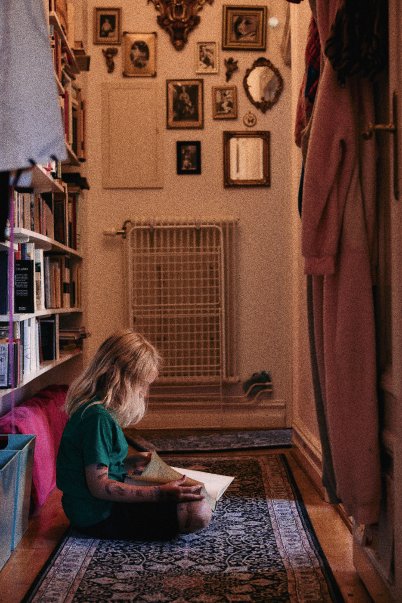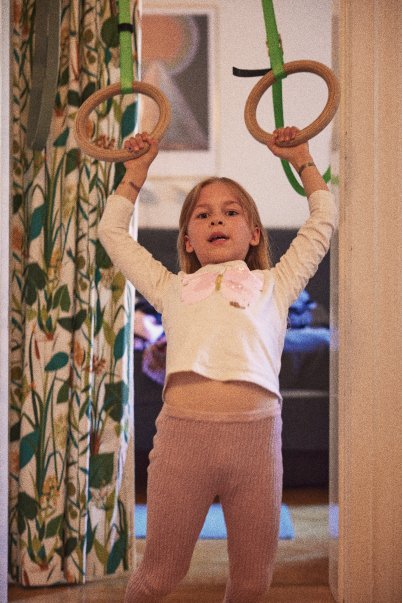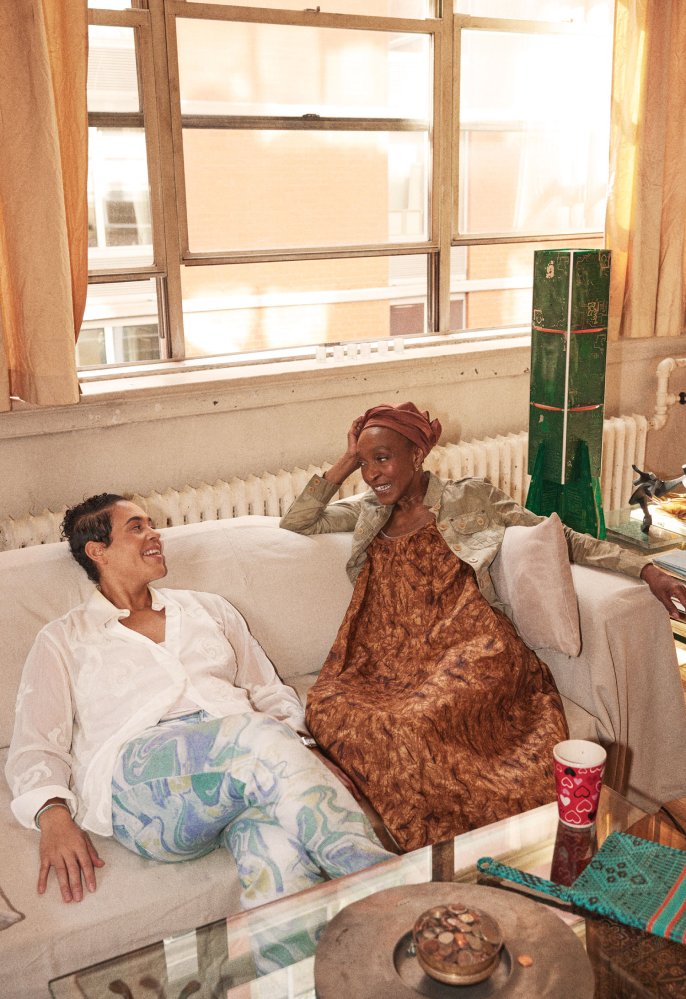Erika and Lena Malmö

“What we’ve learned as the most essential rule in collective living is that you must communicate. Everybody has to be honest about their needs; then you make a plan considering all those different needs. It’s essential that you stick to that plan. That’s the way you create trust, and trust is the key.”
“Living in a collective, with all the systems we’ve created, you see your own personal belongings clearly marked in the context of everybody else’s stuff. And I really love that. It’s such a clear, visual reminder of what life really is. It makes me feel that I am one small part of a much bigger whole.”
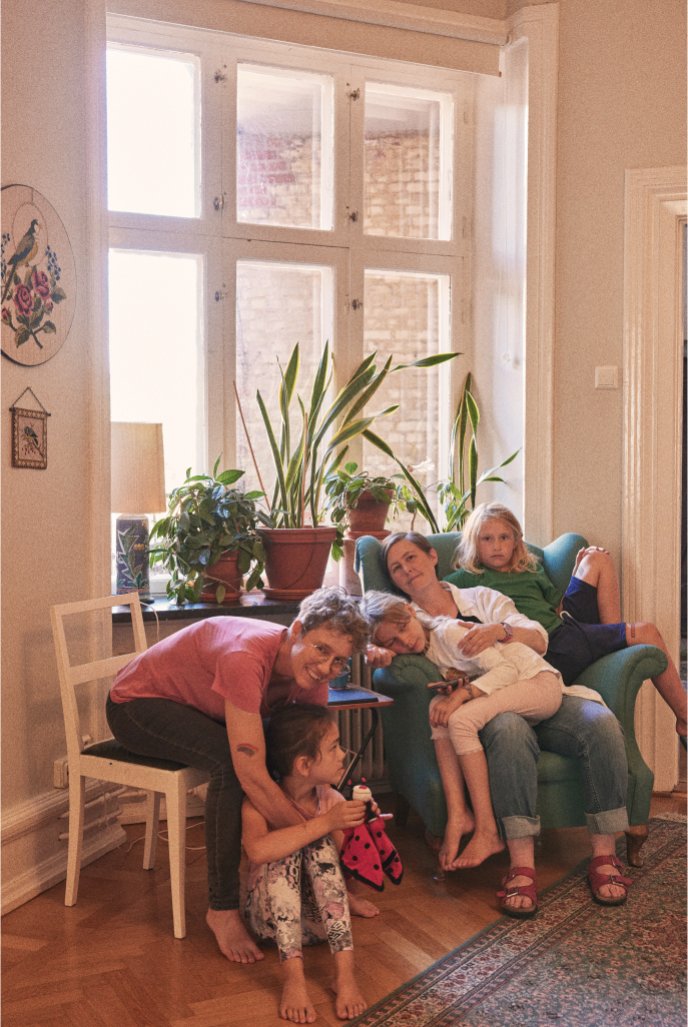
During the summer months, the couple and their kids head outside the city to a small country allotment where they keep a summer cottage with an abundant garden. There, the pace of their life changes. The daily commute to work and school is longer, but the peaceful, natural environment that awaits them at the end of the day offers a kind of creative outlet and space for relaxation. All of this is hard to achieve in the city. It affords them privacy, too. The cottage belongs only to them, although the family they share their apartment with owns the house just next door.
Visitors to Erika and Lena’s home in the centre of Malmö might believe they’ve accidentally stepped into the foyer of a kindergarten. The wide hallway overflows with vibrant clothing organised into seasonally appropriate individual units, each carefully labelled with colourful, handwritten nametags. The winter shelves host a complete collection of scarves, gloves and hats, while the summer section features sunglasses and baseball caps.
In some ways, the structures built into their life in the collective apartment they and their 7-year- old-twins share with another family, echo the peace-keeping rhythms of school. Separating public spaces from private spaces, keeping things straight and ensuring that all members of what they describe as their “extended family” feel there is room specifically for them, requires many systems. That’s why their home is full of lists and colour-coded schedules. All of this helps them maintain order in a network of spaces that must accommodate an abundance of needs and personalities.
“Before I had kids, home was a place to have friends over and to sleep,” says Erika, who works as a university professor. “Now after kids, especially living as we do in a collective, it’s very important that home is a place where things are organised and structured, so that our life can run smoothly and easily.”
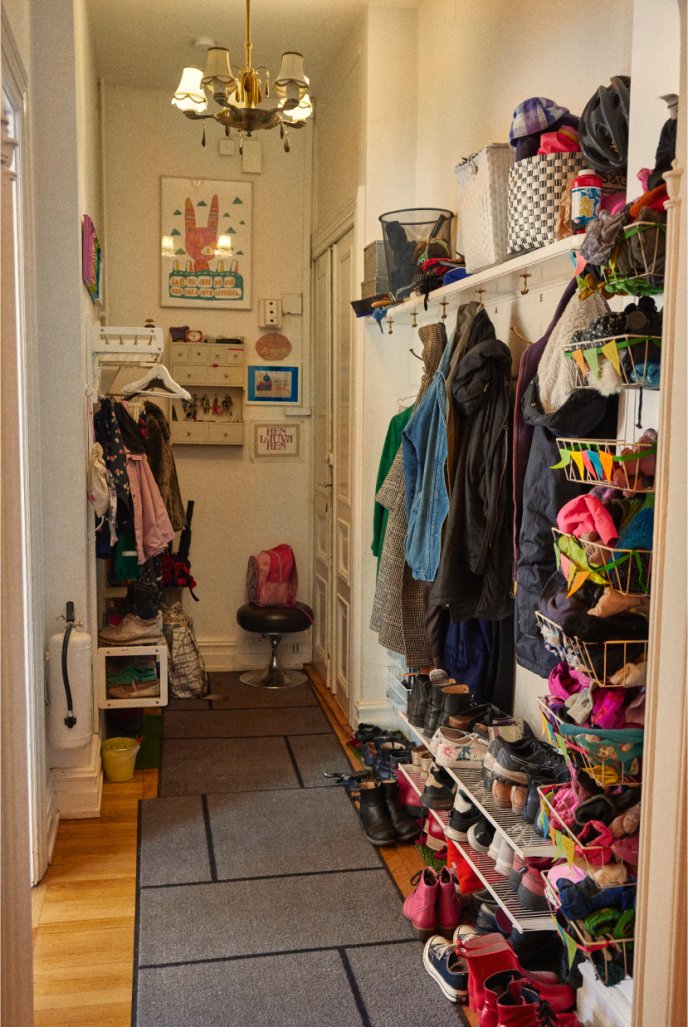
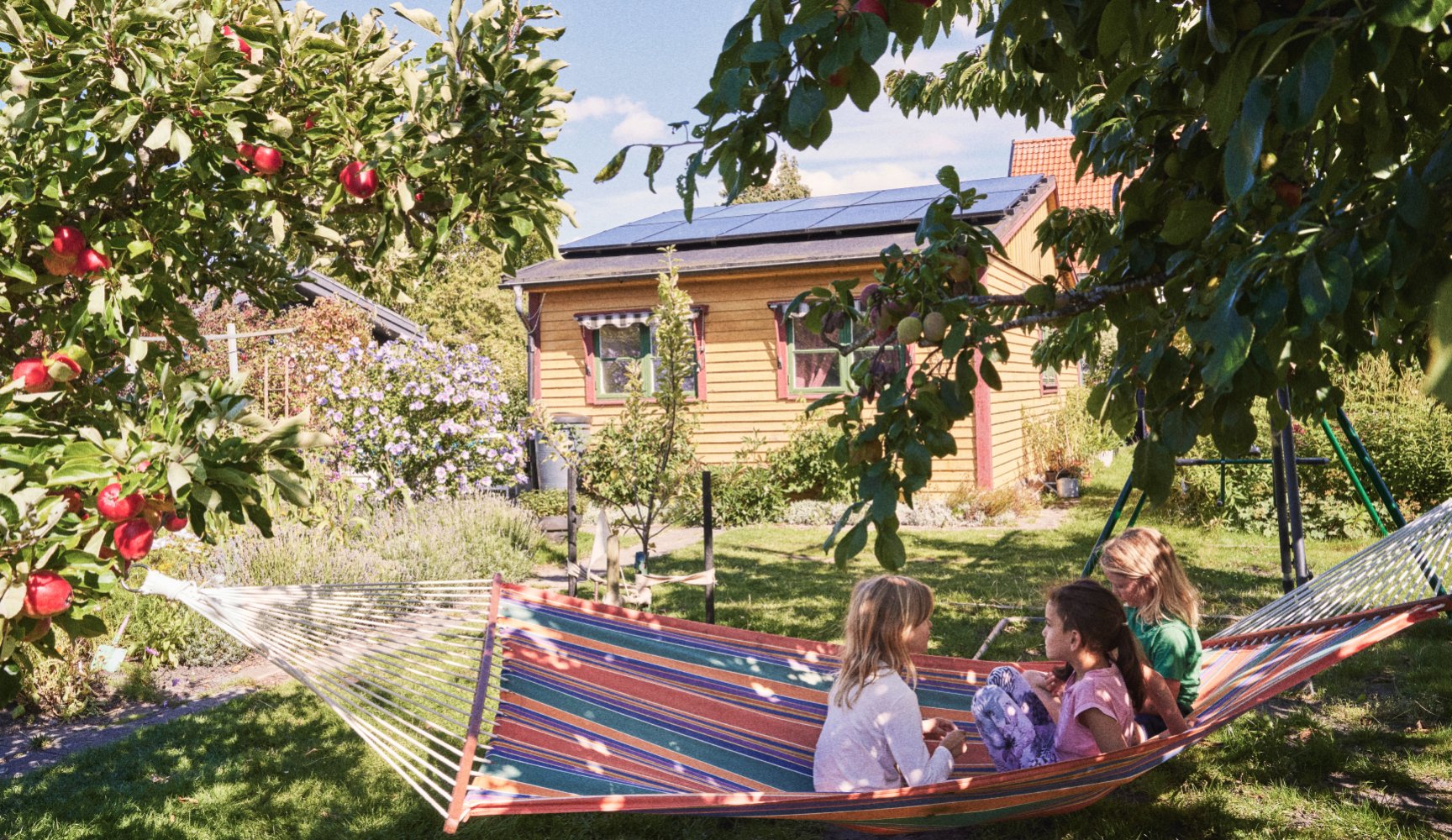
“When we go to our cottage, we get a little break from collective living, which can be a nice change,” says Lena. “The summer house also means something different to me. There’s a lot of projects going on. And you can really expand into the space because of the garden. It’s more about creativity there and more about routine in the city flat. But our flatmates live just next door there, too, so it’s almost like we bring the collective structure with us.”
The logistics of living in a collective may seem overwhelming for some, but for Erika and Lena, it’s always been their preference. Not only does an increased number of residents mean more help with chores and a friendly companion always nearby, but it offers them a diverse take on life that can be refreshing.
“For me, the best and worst things about living in a collective have a flip side,” Lena adds. “I love having other people around and getting new perspectives from them. I think it keeps me open minded. But the other side of that means you always have to negotiate around your own needs. That can be difficult and tiring, but I think ultimately, it’s a good thing to do. It makes you tune in to yourself more than you would otherwise.”
Sharing space with people outside your own family unit certainly comes with its challenges. People tend to have different tolerances for the details of daily life: while some leave their dishes in the sink, and tidy up later, others can’t stand a messy kitchen. When it comes to cleaning, who sets the pace? And then there is the issue of privacy. When you share your home with people other than your family members, how can you take the space that you need?
Keeping open lines of communication, even about difficult subjects, is a fundamental part of life in a collective. Creating a space where every emotion is allowed enables everybody to feel like they can truly be themselves.
